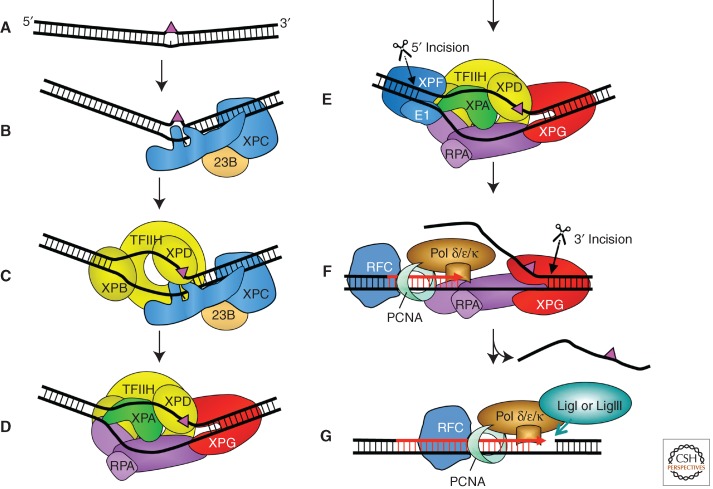Figure 1.
Model for the core NER reaction. (A) Bulky DNA lesions that destabilize duplex DNA are induced by a number of damaging agents. (B) In global genome NER, strongly distorting lesions are directly recognized by XPC-RAD23B, which binds the nondamaged strand opposite the lesion. (C) TFIIH interacts with XPC-RAD23B and pries the DNA open with its XPB subunit allowing XPD to track along DNA until stalls at the damage and verifies the chemical modification (bulkiness) of the lesion. (D) Stalling of XPD at the lesion allows for the formation of the preincision complex by recruitment of XPA, RPA, and XPG. The endonuclease XPG does not make an incision at this point. (E) Recruitment of ERCC1-XPF by interaction with XPA to the complex leads to incision 5′ to the lesion. (F) Initiation of repair synthesis by Pol δ and Pol κ or Pol ε and associated factors, followed by 3′ incision by XPG. (G) Completion of repair synthesis and sealing of the nick by DNA ligase IIIα/XRCC1 or DNA ligase I completes the process.

